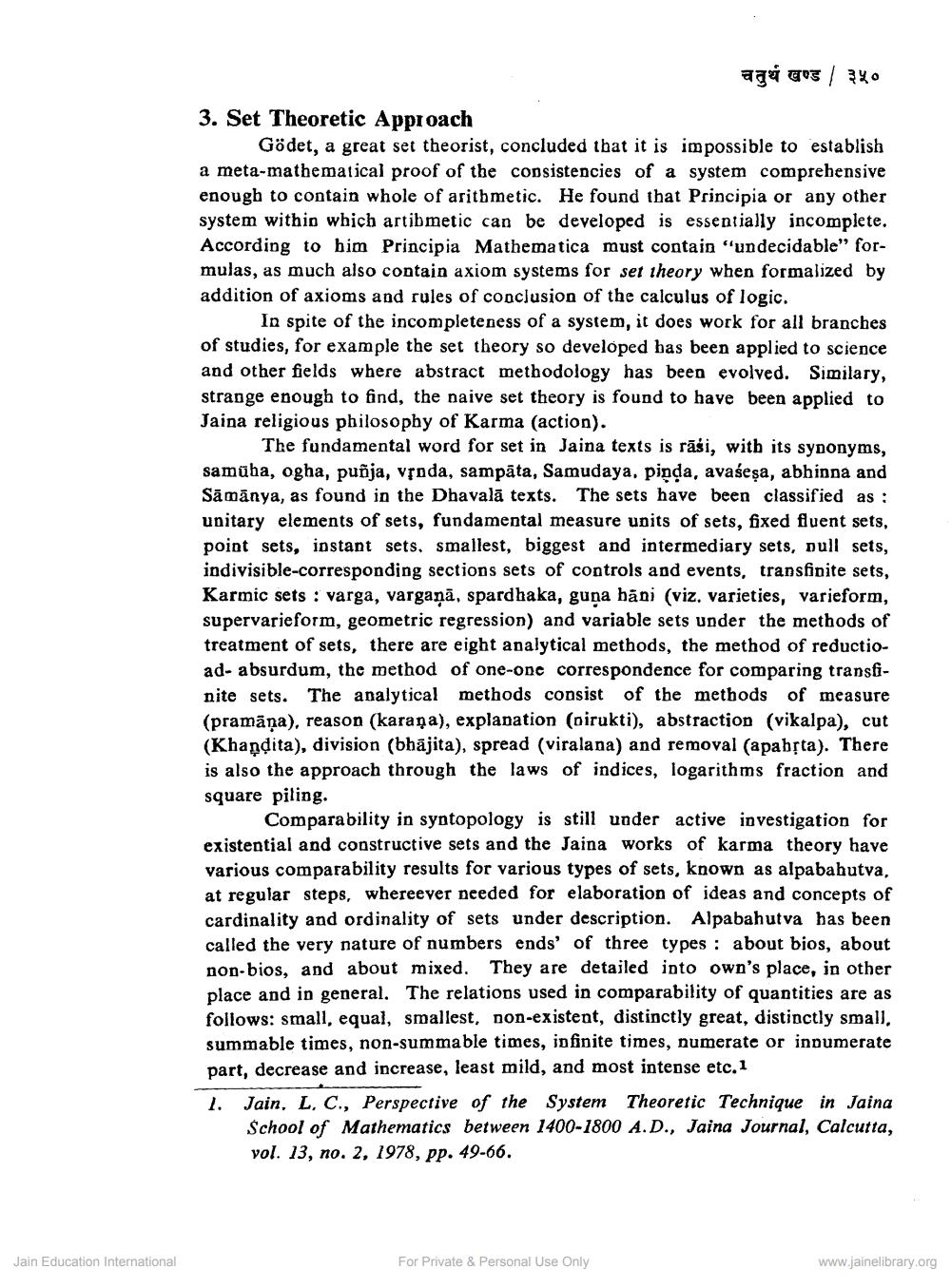________________
चतुर्थ खण्ड | ३५० 3. Set Theoretic Approach
Gödet, a great set theorist, concluded that it is impossible to establish a meta-mathematical proof of the consistencies of a system comprehensive enough to contain whole of arithmetic. He found that Principia or any other system within which artibmetic can be developed is essentially incomplete. According to him Principia Mathematica must contain "undecidable" formulas, as much also contain axiom systems for set theory when formalized by addition of axioms and rules of conclusion of the calculus of logic.
In spite of the incompleteness of a system, it does work for all branches of studies, for example the set theory so developed has been applied to science and other fields where abstract methodology has been evolved. Similary, strange enough to find, the naive set theory is found to have been applied to Jaina religious philosophy of Karma (action).
The fundamental word for set in Jaina texts is rāśi, with its synonyms, samüba, ogha, puñja, vsoda, sampāta, Samudaya, pinda, avaấesa, abhinna and Sāmānya, as found in the Dhavalā texts. The sets have been classified as : unitary elements of sets, fundamental measure units of sets, fixed fluent sets, point sets, instant sets, smallest, biggest and intermediary sets, pull sets, indivisible-corresponding sections sets of controls and events, transfinite sets, Karmic sets : varga, vargaņā, spardhaka, guna bāni (viz. varieties, varieform, supervarieform, geometric regression) and variable sets under the methods of treatment of sets, there are eight analytical methods, the method of reductioad- absurdum, the method of one-one correspondence for comparing transfinite sets. The analytical methods consist of the methods of measure (pramāņa), reason (karaņa), explanation (oirukti), abstraction (vikalpa), cut (Khaņdita), division (bhājita), spread (viralana) and removal (apabsta). There is also the approach through the laws of indices, logarithms fraction and square piling.
Comparability in syntopology is still under active investigation for existential and constructive sets and the Jaina works of karma theory have various comparability results for various types of sets, known as alpabahutva, at regular steps, whereever needed for elaboration of ideas and concepts of cardinality and ordinality of sets under description. Alpabahutva has been called the very nature of numbers ends' of three types : about bios, about non-bios, and about mixed. They are detailed into own's place, in other place and in general. The relations used in comparability of quantities are as follows: small, equal, smallest, non-existent, distinctly great, distinctly small, summable times, non-summable times, infinite times, numerate or inpumerate part, decrease and increase, least mild, and most intense etc. 1 1. Jain. L, C., Perspective of the System Theoretic Technique in Jaina
School of Mathematics between 1400-1800 A.D., Jaina Journal, Calcutta, vol. 13, no. 2, 1978, pp. 49-66.
Jain Education International
For Private & Personal Use Only
www.jainelibrary.org




